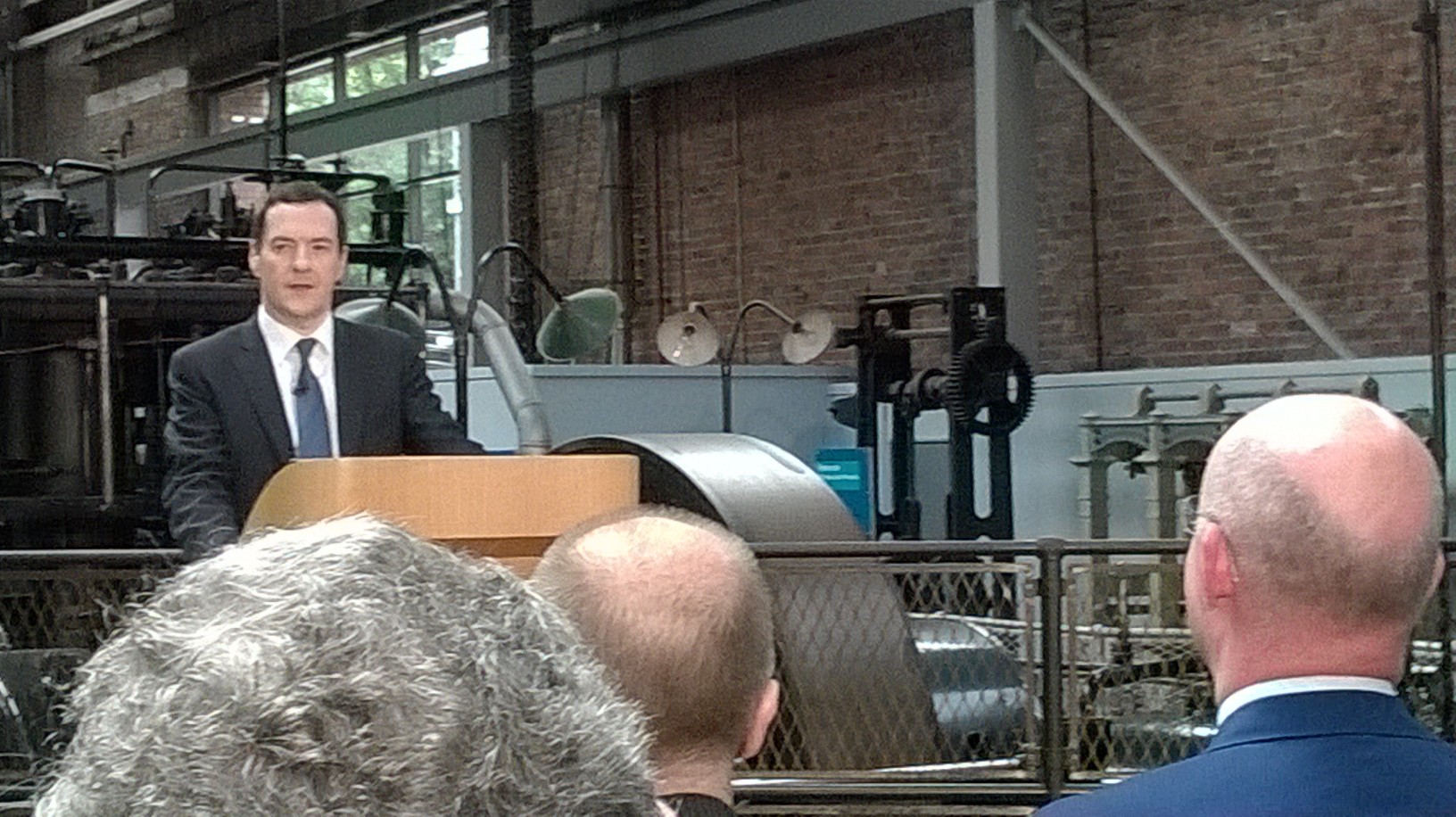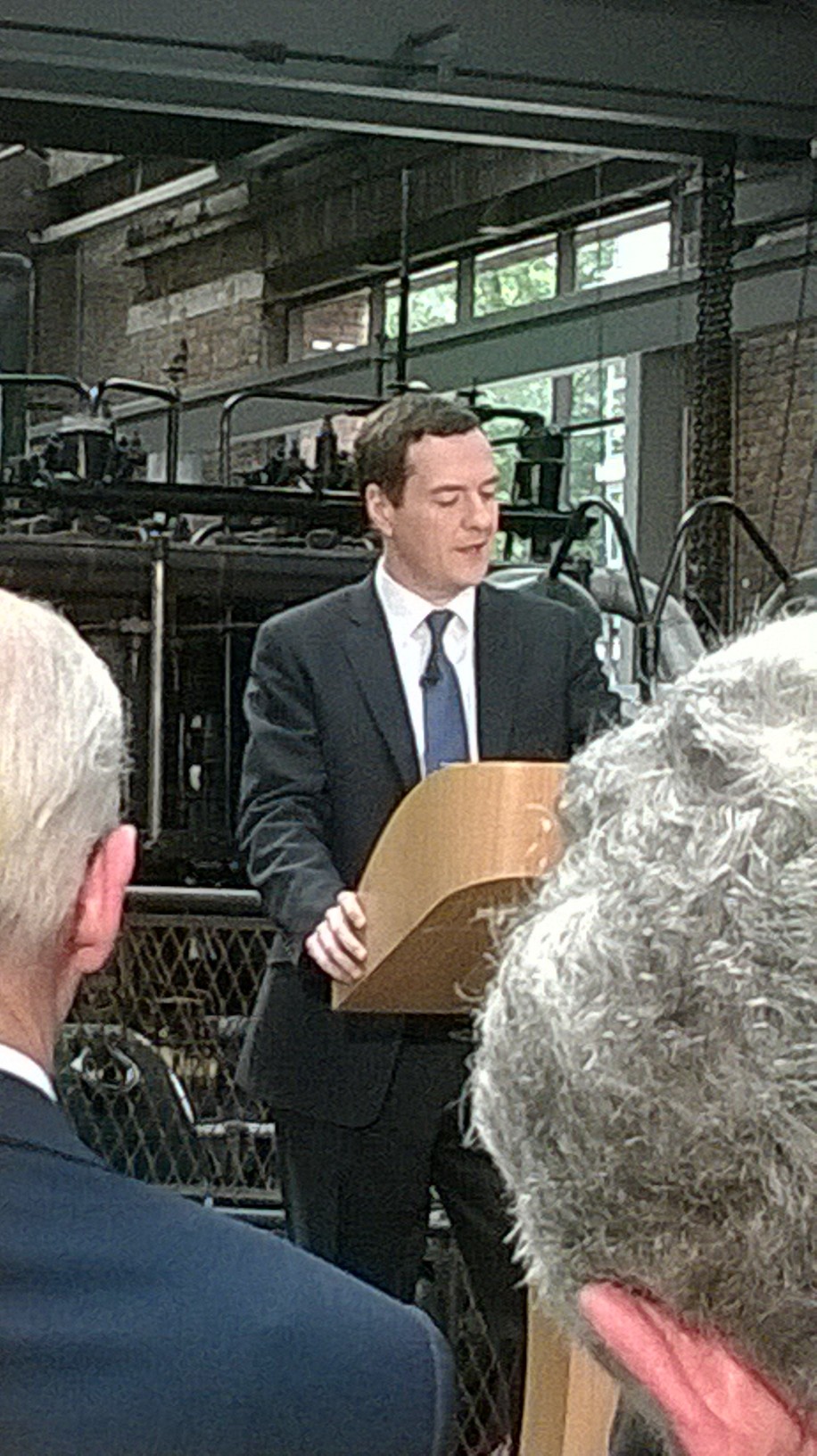The Chancellor, George Osborne, has announced his ambitions to create a northern “supercity” to rival London as a global hub by building HS3, a high speed rail link between Manchester and Leeds. He was speaking, appropriately enough, at our sister museum, the Museum of Science and Industry, Manchester, which tells the story of where science met industry to create the modern world and, as the Chancellor himself highlighted, is the site of the world’s oldest surviving passenger railway station.

His speech, to around 50 key individuals from the region, among the beam engines and other great machines of the museum’s Power Hall, was introduced by Science Museum Group Director, Ian Blatchford, who leads the largest group of science museums in the world which, as he pointed out, lie on “both sides of the Pennines”.
The Chancellor described how he wanted to channel long-term investment into links between the traditionally rival cities, which have a combined population of nine million, similar to that of London. “We need a Northern powerhouse,” he said. “Not one city, but a collection of cities – sufficiently close to each other, that combined, they can take on the world.” To offset the huge gravitational pull of London, the Chancellor also wants to take advantage of the world class universities and teaching hospitals in the north, and “iconic museums such as this one” to create a belt of innovation that straddles the Pennines along the M62 corridor.

Among the audience listening to his vision for a “third high speed railway for Britain” along the existing rail route, was Sir David Higgins, Chairman of HS2, who has identified the need for better connections in the north. After the Chancellor’s speech on how to make these northern cities more than the sum of their parts, the Prime Minister, David Cameron visited the museum for a round table with key individuals, including Ian Blatchford, Sir David and Lord Heseltine.
The Chancellor’s ambitions to bootstrap the north’s knowledge-based economy by prioritising science investment – which included a challenge to those in the audience to come up with a “Crick of the north” (a reference to the biomedical research powerhouse under construction in London) – dovetail with those of the Science Museum Group, which wants to make the Museum of Science and Industry a regional hub for the development of world class exhibitions. The £800,000 financial support for the museum announced by the Chancellor in May has kick-started a £3 million plan for a purpose-built exhibition space that will shift the centre of gravity of the Group towards the north and enable the Museum of Science and Industry to develop its own exhibitions that can tour to the rest of the group and beyond.
Plans are already under way to develop an exhibition on graphene, Manchester’s latest global scientific export, in 2015, said Mr Blatchford. The properties of this new form of carbon, found by Andre Geim and Konstantin Novoselov at the University of Manchester, are extraordinary and graphene has potential in the aerospace, automobile, electronics, and communications industries.
The Museum of Science and Industry has appointed Sally MacDonald as its new Director who will start in September. She is currently the Director of Public and Cultural Engagement at University College London (UCL), and will succeed Jean Franczyk, who is leaving the museum after two years to become Deputy Director of the Science Museum.
The Chancellor’s full speech can be viewed on the Government’s website.